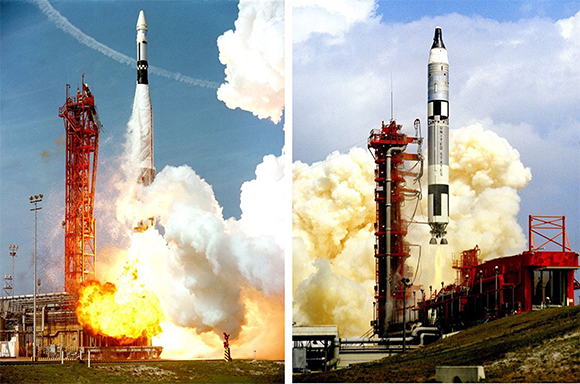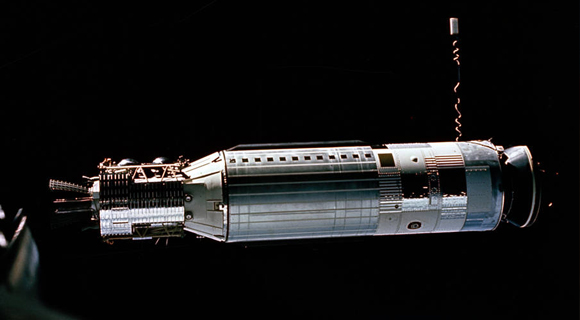50th Anniversary: Gemini’s First Docking of Two Spacecraft In Earth Orbit
By Space Coast Daily // March 17, 2016
crucial spaceflight technology milestone

BREVARD COUNTY • CAPE CANAVERAL, FLORIDA – On March 16, 1966, command pilot Neil Armstrong and pilot David Scott successfully docked their Gemini VIII spacecraft with the Agena target vehicle, the first-ever linking of two spacecraft together in Earth orbit.
This crucial spaceflight technology milestone would prove vital to the success of future moon landing missions.
Catching up with already-orbiting spacecraft also has been essential during missions to the International Space Station.
The astronauts aboard the Gemini spacecraft took this side view photograph of the Agena target vehicle at a distance of 45 feet during an inspection prior to docking. The two spacecraft were in the third orbit of the mission, above the west coast of Mexico.

Because of problems with the Gemini spacecraft control system, the crew was forced to undock after approximately 30 minutes, as the spacecraft-target vehicle combination had begun to encounter increasing yaw and roll rates.
The crew regained control of their spacecraft by using the reentry control system (RCS), and the decision was made in Mission Control to follow mission rules that dictated once the RCS was activated, the crew must be brought home.
The Gemini VIII landed early in a secondary landing area in the Pacific, splashing down within two miles of the predicted impact point 10 hours, 41 minutes after liftoff.
CLICK HERE FOR MORE SPACE NEWS














